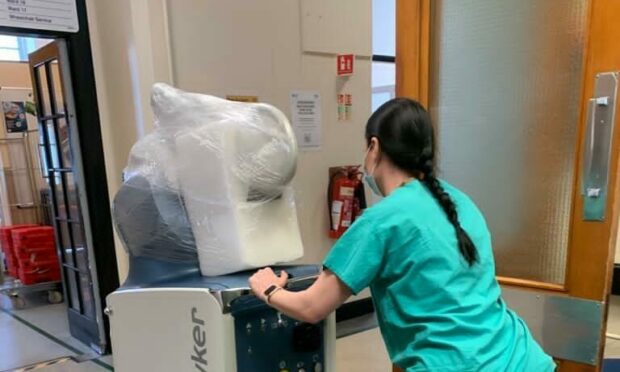The true extent of violence against women working for Scotland’s NHS is unknown because of “inaccurate” recording by health boards, it has been revealed.
Only four of the country’s 14 boards were able or willing to provide data on the number of female members of staff attacked in the line of duty over the last three years.
Since 2018, there have been at least 28,730 assaults on NHS staff as they worked.
A number of health boards responded to the freedom of information request with incomplete information regarding the gender or sex of the person attacked, saying they did not routinely record that piece of data.
Several health boards, including Glasgow and Lothian said its Datix system did not record the employees’ gender.
Violence against women organisation Engender said underreporting by public institutions like health boards and councils of violent incidents against females leads to a “phenomenon where official crime statistics do not represent the true number of crimes committed”.
Scottish Conservative MSP Maurice Golden, whose office conducted the freedom of information request, warned attacks against NHS staff and women were something Scottish society should reflect on.
The Tories have called for the data to be included in future to truly reflect the scope of violence against women working in our public sector.
Regional breakdown
Grampian did not record the gender of each person assaulted.
In Tayside, more than 80% of incidents recorded failed to mention whether the staff member was male or female.
In 2020, during the peak of the coronavirus pandemic, 10% of those recorded attacks were against women, compared to 3% against men. A total of 87% of assaults against NHS Tayside staff last year were not recorded by gender or sex.
Highlands health board provided information where it could, but could only provide a breakdown where the reporter had chosen to record the assaulted persons’ gender at the time. With this in mind, 654 incidents of violence against a women member of staff was recorded, compared to 359 men and one unspecified.
Orkney and Shetland health boards could provide a percentage breakdown, but because there had been fewer than five assaults in each of the previous three years, an exact figure could not be given.
NHS Fife and NHS Western Isles did not respond to the freedom of information request within the required time.
Very concerning
Scottish Conservative Shadow Minister for Equalities and Older People Alexander Stewart: “It is very concerning that health boards do not routinely record whether these attacks targeted male or female NHS workers.
“Despite the fact that any sort of workplace assault against anyone is entirely unacceptable, we need this type of data to understand the extend of abuse directed at women.
“These figures should serve as a wake-up call to health boards. We urge them to explore all methods of recording violent attacks in order to provide an accurate and honest picture of workplace violence, including the attacks against our brave frontline NHS staff.”
The Scottish Government has said it will continue to work with health boards to “standardise” the approach to crime recording.
A spokesperson said: “Figures on violence and aggression towards NHS Scotland staff are not collected nationally.
“Individual health boards record adverse events, and they will identify factors that contribute to these incidents, including gender. We are working with Health Boards to review the recording of violence and aggression, and to standardise our approach.
“We have been clear that Health Boards must support NHS Staff by taking appropriate action against anyone who assaults a staff member. Specific laws are in place to protect emergency workers through the Emergency Worker(s) Act (Scotland) 2005.
“Training on managing violent incidents is available to all staff, through our national learning portal, with expert resources provided by NHS Health Scotland.”

